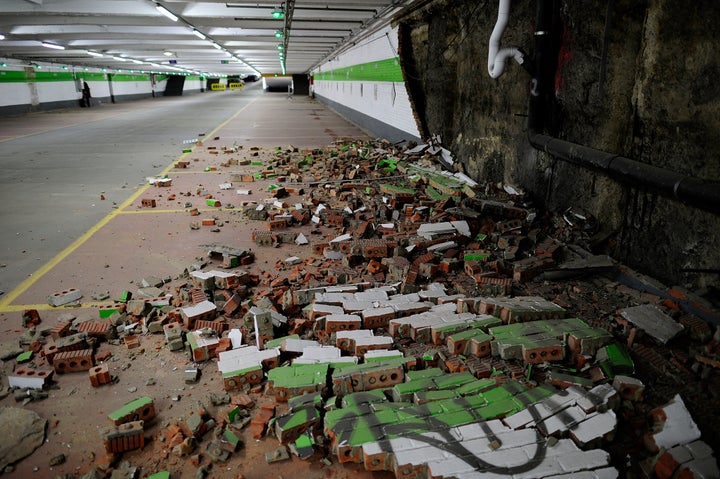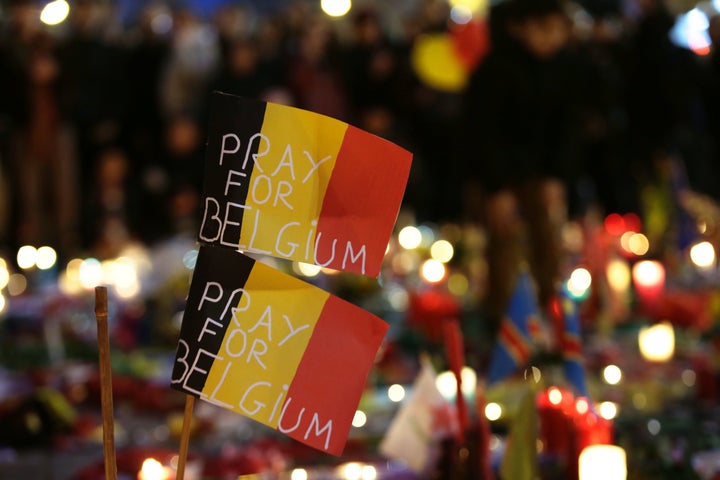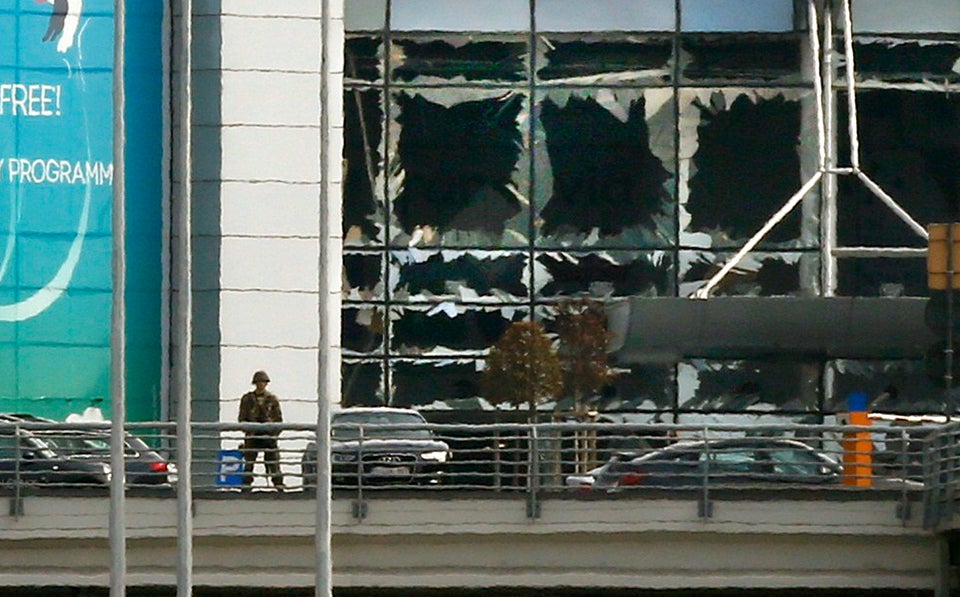
On Tuesday morning, four men brought utter carnage to the city of Brussels, setting off bombs in an airport and onboard a train that left 32 dead and hundreds wounded.
How did they do it?
The investigation into Tuesday's horror is just beginning. Belgian authorities are still hunting a key suspect in the attacks, who they believe fled the airport after leaving behind a large explosive device. The other attackers are thought to have died in suicide attacks.
Authorities have begun to release some details about the suspects' identities, and evidence found in police raids across Belgium since the attacks. Here is a look at what we know so far about the bombs deployed in the attacks, and why that information is so significant.
What we know about the bombs used in Brussels
Belgian officials said two suicide bombs were detonated at the Brussels airport, and a third bomb was later found unexploded. Another suicide bomber blew himself up on a Brussels metro train.
Investigators believe that the attackers brought the bombs into the airport hidden in suitcases. Security footage of three suspects at the airport shows them pushing luggage carts. The taxi driver who drove the suspected attackers to the airport said his suspicions were roused when they wouldn’t let him touch their luggage.

While the Islamic State militant group claimed the bombers wore suicide vests, investigators say the scale of the damage at the airport indicates that the bombs were carried in luggage, as bombs in suicide vests would have had less impact. Many of the victims were wounded in the legs, witnesses said, suggesting an explosion from luggage left on the ground. In the security footage of the suspects, two are wearing black gloves on their left hands, prompting speculation that this was where they hid the detonators, although some experts found that less plausible.
A Brussels hospital official said the bombs were packed with nails, one way that bomb-makers use to maximize the damage from shrapnel after the bomb explodes. “The bomb contained nails to create more victims. Some victims have nails in their bodies,” spokesman for the University Hospital Gasthuisberg in Leuven Marc Decramer told reporters. A hospital X-ray of one of the victims, obtained by European Pressphoto Agency, showed a large nail lodged in the patient’s chest.
Officials have yet to confirm what types of explosive chemicals were used in the bombs. Yet on Wednesday, the Belgian prosecutor's office said they had found a possible bomb-making factory in an apartment where the attackers stayed.
The taxi driver who brought them to the airport led investigators back to the apartment where he picked them up, where investigators discovered 33 pounds of a highly volatile explosive called TATP, the same used in the Islamic State attacks in Paris last November. Authorities also found chemicals used to make TATP, including 150 liters of acetone and 30 liters of hydrogen peroxide, nails and screws, an Islamic State flag, and according to Belgian media, a fourth bomb intended for the airport attack that wouldn’t fit in the taxi at the last moment.
Sources told NBC News that the Brussels attackers used ammonium nitrate bombs, noting that TATP can be used as a booster charge to trigger the detonation of more stable explosives like ammonium nitrate.

What do the bombs tell us about the attackers?
The use of TATP, also known as triacetone triperoxide, suggests a certain level of sophistication in bomb-making, experts say.
TATP has become the explosive of choice among Islamic extremist groups operating underground in Europe, because it’s easy to get hold of its ingredients and relatively hard to detect. Hydrogen peroxide can be found in household bleach and acetone in nail polish remover. Most airline security is primed to detected nitrogen-based explosives, not peroxide-based TATP.
But because TATP is so volatile -- earning it the nickname "The Mother of Satan" -- it takes a skilled bomb-maker to build and handle a TATP bomb, and to stop it from exploding before the appointed time. This has led some experts to conclude that the attackers in Brussels received support from a highly trained cell of Islamic State operatives in Europe, including bomb-making experts.

Does that indicate links to other attacks?
Possibly. TATP was also used by the suicide bombers in the Paris attacks, also claimed by the Islamic State.
Belgian officials are still investigating possible connections between the attacks, but Belgian media have reported connections between at least one of the suicide bombers and Paris attacks suspect Salah Abdeslam, who was captured in Brussels on Friday.
Najim Laachraoui, who was already the subject of a manhunt for his links to Abdeslam, has been connected to the Brussels airport attack by Belgian media. Some reports have speculated that Laachroui, a 24-year-old Belgian who studied electrical engineering, could have been the bomb-maker behind both attacks.
If the Paris and Brussels attacks were the work of the same bomb-maker, this raises concerns about the extent to which the Islamic State has deployed operatives and infrastructure in order to launch attacks across Europe.
Well, that’s terrifying.
It does underline the urgency for European security services -- especially but not only in Belgium -- to better understand, monitor and apprehend radicalized citizens, including those joining Islamist militants in Iraq and Syria, and to strengthen coordination to tackle cross-border extremist networks.
But these bombs are not an entirely new threat. Militants have been trying to attack Europe and the U.S. using TATP explosives for years. In December 2001, British extremist Richard Reid tried and failed to blow up a flight from Paris to Miami using TATP explosives hidden inside his shoes. In July 2005, four British men used TATP explosives to blow up a bus and underground trains in London, killing over 50 people. Both incidents were linked to al Qaeda.
So security forces are not searching in the dark. While hydrogen peroxide-based explosives are harder to detect, a foiled 2006 plot to put TATP explosives on planes led airlines to ban most liquids on flights. Dogs can be trained by security forces to detect the odor of TATP. And experts, such as University of Rhode Island professor Otto Gregory, are working on specialized TATP sensors to make it even easier to detect, the New York Times reports.

